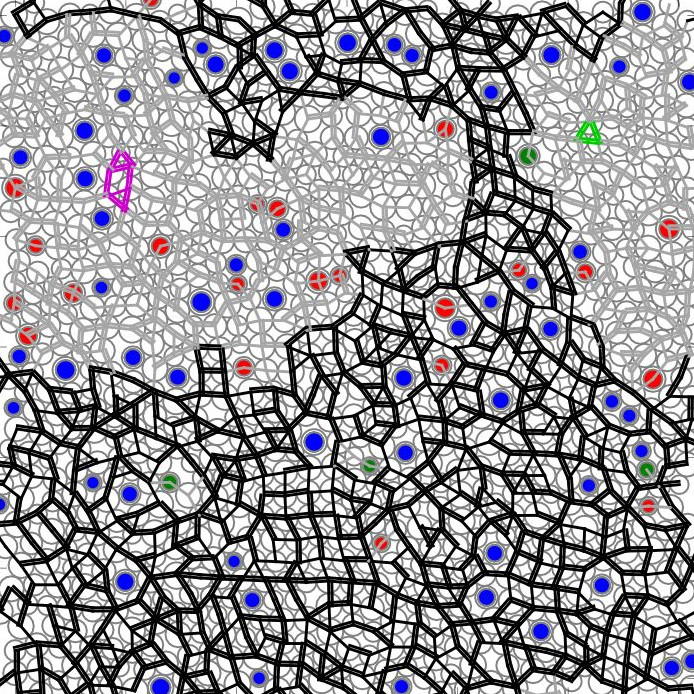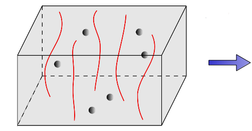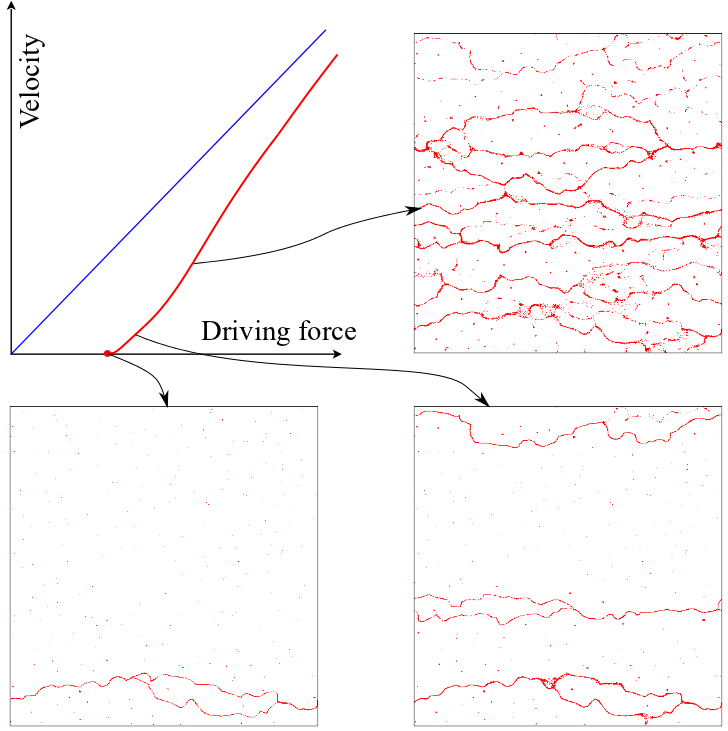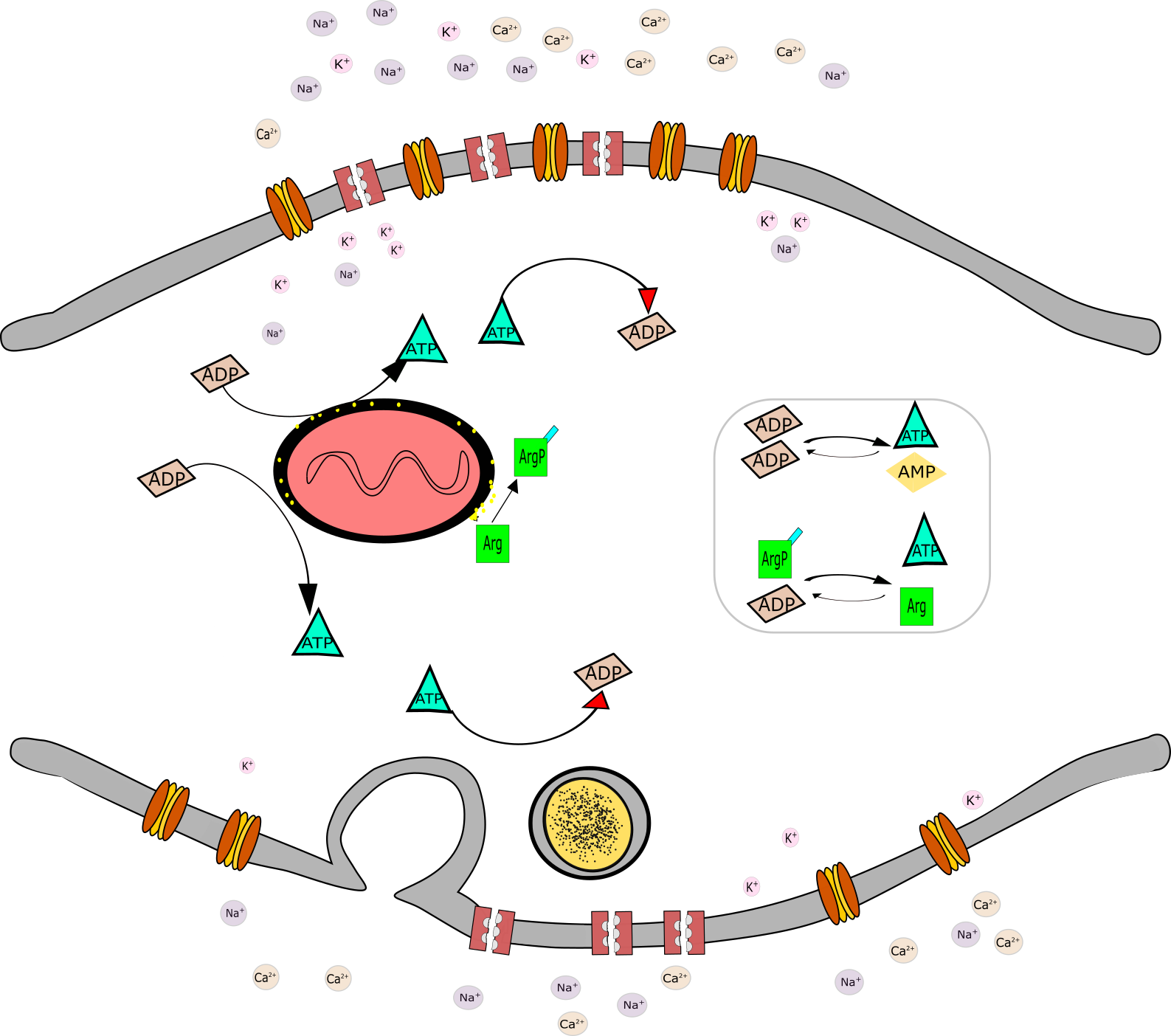
|

|

|

|

|
Neuronal Metabolism |
Mexican Cavefish |
Active Matter |
Granular Matter |
Superconductor Vortices |
I'm looking for a postdoc to work on power delivery in neurons with Greg Macleod. Experience with diffusion problems and/or the Python programming language is a plus. To apply, send me a CV at yfily@fau.edu. Informal inquiries welcome.

Synapses, where nerve signals pass from one neuron to another, consume a significant amount of energy.
Their power demand is highly volatile, going up an order of magnitude in a matter of milliseconds when a signal passes through.
Synapses are also spread out along axons and dendrites and do not always have a mitochondrion (energy production unit) nearby.
Under those conditions, providing consistent adequate power to synapses is a tricky challenge.
It is perhaps not surprising, then, that several neurodegenerative diseases (Huntington, ALS, Parkinson, brain ischemia) have been linked to dysfunction in the neurons' power production, storage, or delivery systems.
In this project, we use theoretical and computational modeling to elucidate the mechanisms by which neurons meet the power demand of their synapses. We are particularly interested in the role of creatine phosphate (in vertebrates) and arginine posphate (in invertebrate), which can store energy for short-term use, enhance energy transport between mitochondria and synapses, and help mitochondria respond faster to variations in power demand.
This is a collaboration with Greg Macleod's lab, also at the Wilkes Honors College.
Greg and I are looking for a postdoc to work on this project. Experience with diffusion problems and/or the Python programming language is a plus. To apply, send me a CV at yfily@fau.edu. Informal inquiries welcome.

Astyanax mexicanus is a freshwater fish found in rivers and caves in Mexico and Texas. Cave populations exhibit a number of common traits including eye degeneration, albinism, insomnia, . What's interesting is that those traits evolved multiple times independently in different caves.
Surface fish school, but they require visual input. Cave fish do not school. Is it they can't see well enough to school, or because they de-evolved schooling? It turns out it's the latter: surface fish in the dark make unsuccesful attempts at schooling, whereas cave fish show no preference of proximity or alignment. On the other hand, cave fish exhibit a form of antisocial behavior that modulates their exploration strategy when their environment becomes crowded.
→ Plos one 17 (4), e0265894 (2022)
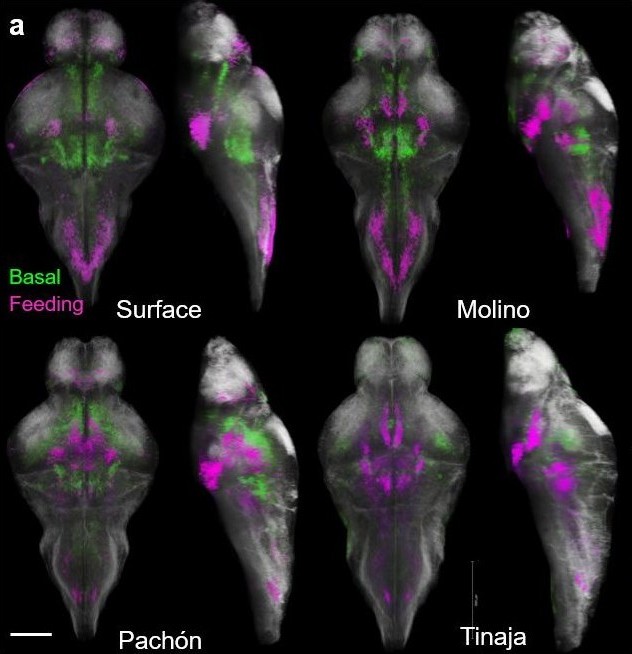
Comparison of neuroanatomy and brain activity between surface fish and three different cave populations shows evolutionary convergence between cave populations.
→ Science advances 6 (38), eaba3126 (2020)
Analysis of various morphological and behavioral traits in surface, cave, and surface-cave hybrid suggests they result from independent genetic changes.
→ bioRxiv 2021.12.16.472318 (2021)
Active matter is characterized by a constant input of energy at the microscopic scale that keeps the system out of equilibrium. The concept is particularly suitable to describe living organisms, that are able to generate motion and stresses using energy found in the environment. The design of artificial systems that emulate this property is also attracting a lot of attention.

Microscopic filaments with self-propulsion forces acting all along their length, as found in microtubule assays, may buckle if the motion of their head is hindered. Depending on the balance of translational and rotational drag at the head, two buckled states are possible: a coil rotating on itself, or a beating filament with net translational motion.
→ J. R. Soc. Interface 17 (165), 20190794 (2020)
Thermodynamic quantities like temperature, free energy... are not always well defined in nonequilibrium systems.
Pressure, on the other hand, can always be measured as the force per unit area exerted on a wall.
In active systems, however, it depends on the nature of the wall as well as the bulk properties of the system. In other words, generic active systems do not have an equation of state.
→ Nature Physics 11, 673 (2015)
→ J. Phys. A: Math. Theor. 51, 044003 (2017)
To understand active boundary effects in 3D, one must understand the dynamics of active particles on curved surfaces.
Whether the system exists entirely on the surface (cells migrating on tissues, animals flocking on the Earth’s surface) or is merely bounded by it, its active dynamics is influenced by the geometry of the surface.
Mathematically, this implies revisiting part of the basic theoretical framework of active matter — the derivation of hydrodynamic equations by coarse graining the equations of motion — and expressing it in the language Riemannian geometry.
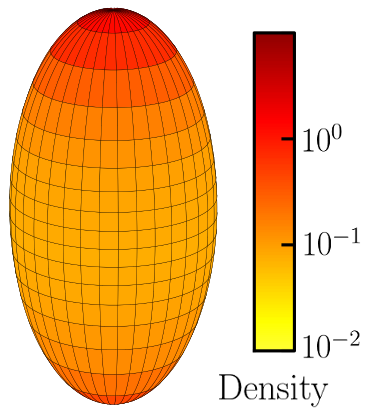
One application of this new "curved" framework is the 3D version of the strongly confined ideal active gas discussed below. Similar to the 2D case, the density profile on convex boundaries is controlled by the local curvature; however the curvature is now a tensor.
Another application is flocking on curved surfaces. Even if they possess no curvature sensing apparatus, the active motion of such flocking particles allows them to probe the local geometry of the surface. Lasting collective consequences of this sensing, however, only arise when the system exhibits orientational order.
→ arxiv:1601.00324 (2016)
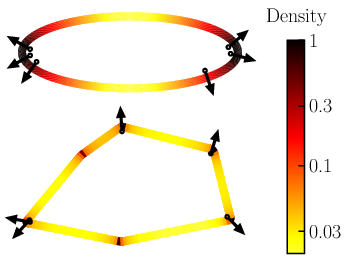
Boundaries have profound effects on active systems, that can be exploited to achieve control over them. Recent examples include one-way gates for micro-swimmers and bacteria powered micro-motors.
In the case of dilute non-aligning self-propelled particles, the density and pressure at the boundary can be worked out analytically provided the confining box is small enough, thus providing a tool to understand and design such confinements.
→ Soft Matter, 10, 5609 (2014)

Historically, the study of active matter started as the study of flocking phenomena, and the way aligning interactions lead to macroscopic alignment remains central to the field.
Some key features of active systems, however, do not require such aligning interactions.
In fact, anomalous clustering and even phase separation can be observed in collections of non-aligning self-propelled particles with steric interactions, through a process akin to a traffic jam.
Moreover, this simple model turns out to be an exciting ground for testing ideas on the nature of equilibrium breaking in active systems.
→ Phys. Rev. Lett. 108, 235702 (2012)
→ Soft Matter 10, 2132 (2014)
→ COCIS 21, 34 (2016)
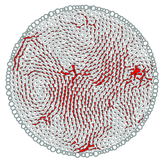
Most studies of active matter are based on concepts from hydrodynamics, i.e. they assume a fluid state. At high density, however, glassy states may arise, that require other approaches. One motivation is the glassy dynamics observed in confluent monolayers of epithelial cells.
When particles have aligning interactions, their angular degree of freedom may couple to phonon modes of the dense packing, leading to suprising oscillating states.
→ Phys. Rev. E 84, 040301 (2011)
→ Soft Matter 10, 2132 (2014)
Particles propelling themselves through a fluid are an example of a system in which the dynamics of active particles can be worked out from more fundamental principles. In this case, the interactions between particles are mediated by the fluid: a particle that moves through the fluid disturbs it, and other particles are affected by this disturbance. This type of interaction is crucial to understand, e.g., the large scale dynamics of swimming micro-organisms or artificial micro-swimmers. Because of their small size, the dynamics of such particles and their surrounding fluid is dominated by viscosity, with an important consequence: the equations describing the fluid are then linear and powerful analytical tools can be applied to determining the interactions mediated by the fluid.
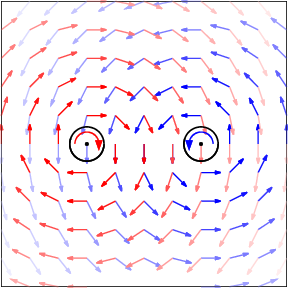
A remarquable property of rotating particles is that they can create azimuthal flow fields that lead to azimuthal interactions between particles. The nature of this azimuthal flow field, however, critically depends on the source of rotation. In fact, the leading (dipolar) order azimuthal flow field of a rotating particle driven by an external torque is proportional to that torque and therefore vanishes when the particle is driven internally, i.e. rotates by pushing on the fluid. Such internally driven rotors still exhibit an azimuthal interaction much similar to that experienced by externally driven ones, but with a faster decay (1/r4 instead of 1/r2 for a liquid-air interface).
One important consequence of the existence of an azimuthal interaction, is the possibility to form self propelled pairs, i.e. pairs of rotors rotating in opposite directions that push each other in a common direction.
→ Soft Matter 8, 3002 (2012)
